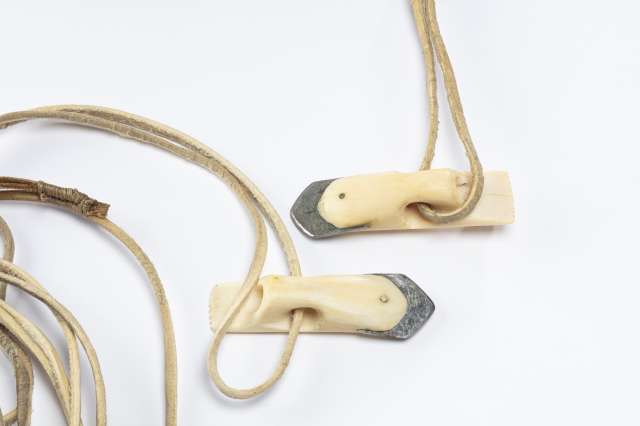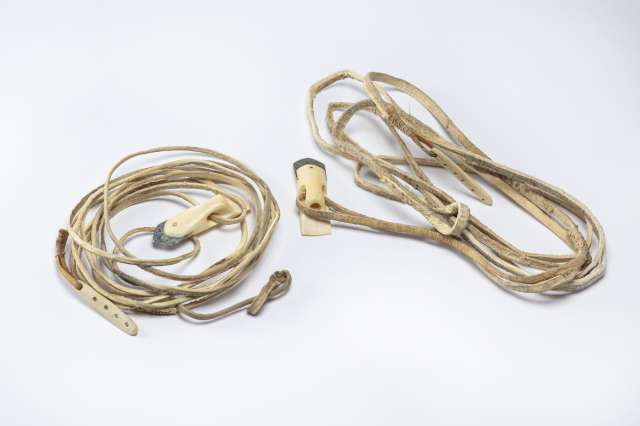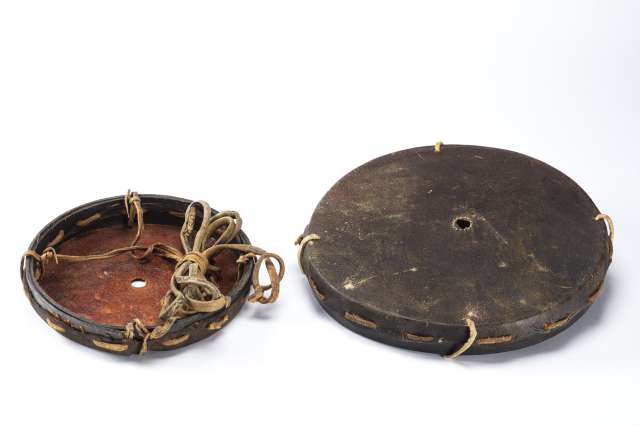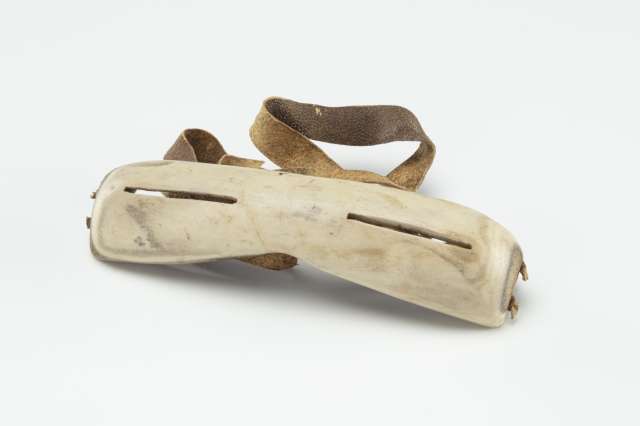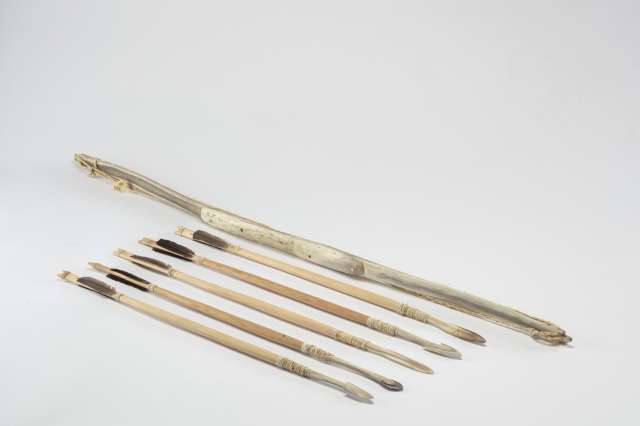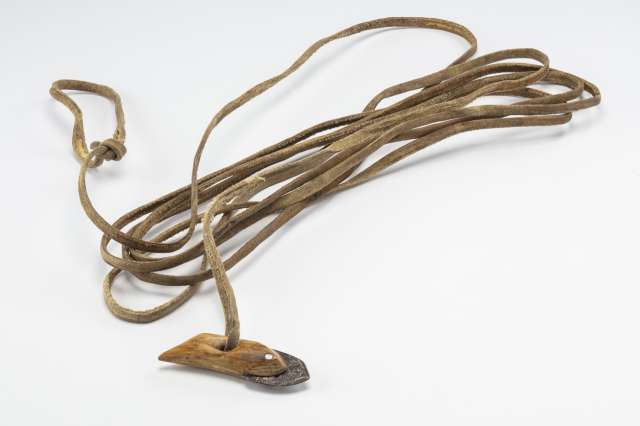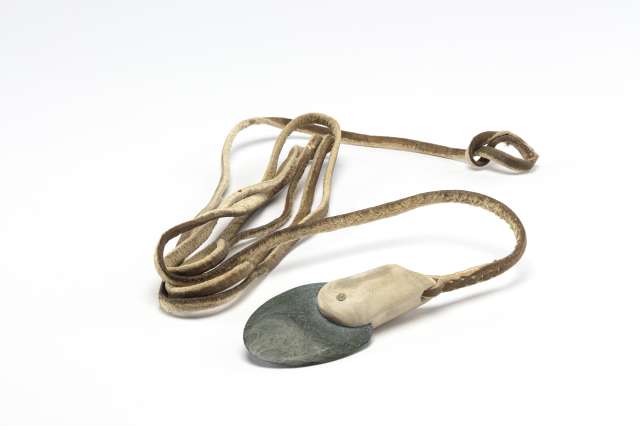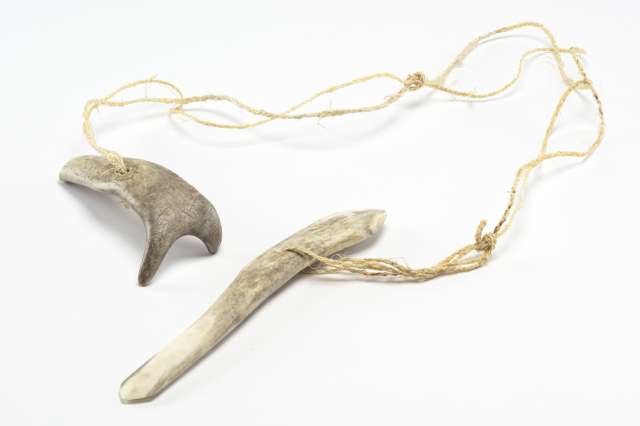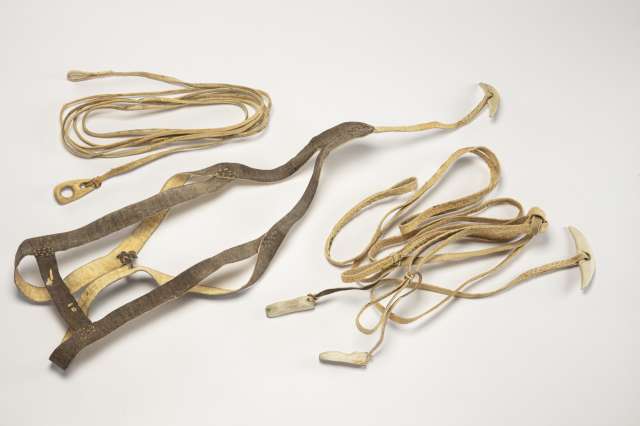Gear for hunting sea mammals
This hunting gear was intended for large sea mammals, like narwhals, belugas, and bowhead whales. It was used in summer by hunters aboard their qajaq (kayak), before motorboats became available.
Harpoon heads
The two harpoon heads (tukkaq, singular noun) were each mounted on the end of a harpoon and used to hang on to the harpooned animal. The harpoon head was attached to a line (aliq), which at the other end had a loop (qangiq) that held a seal-skin float (avataq). The float would show the hunter where the animal was in the water, in addition to keeping it from sinking. This need for buoyancy explains why the seal's pectoral flippers had to be kept, and why care was taken to avoid piercing them. They were crucial to making the avataq, being useful not only as handles for carrying the avataq but also because, having many nerves, they made the whole system more buoyant. Given the fragility of the skin of large sea mammals, the tukkaq blade was deliberately kept dull to make sure the harpoon head would stay embedded. Harpoon tension could be adjusted by the pierced ivory toggle on the harpoon line.
Speed-reduction devices
The two drum-like objects are speed-reduction devices (niutaq, singular noun) that serve to slow down the harpooned sea mammal. Such devices were made by stretching a seal skin over a circular whalebone frame. The hole in the middle would let water through to reduce the tension on the cords wrapped around the frame, thus keeping them from rupturing. The white foam spurting through the hole would show the hunter where the animal was in the water. The animal's size determined the type of speed-reduction device to be used. The larger device was used for bowhead whales. There was no consensus among elder respondents on the way the niutaq cords were attached to the line leading to the harpoon head.
Nowadays, harpoon heads are usually made of metal, instead of bone or caribou antler. Seal-skin floats have been replaced with plastic orange buoys, although hunters say the avataq was more effective. Speed-reduction devices are no longer used so much. Also, they're no longer made of seal skin, being instead a square plywood board with a hole in the middle.

